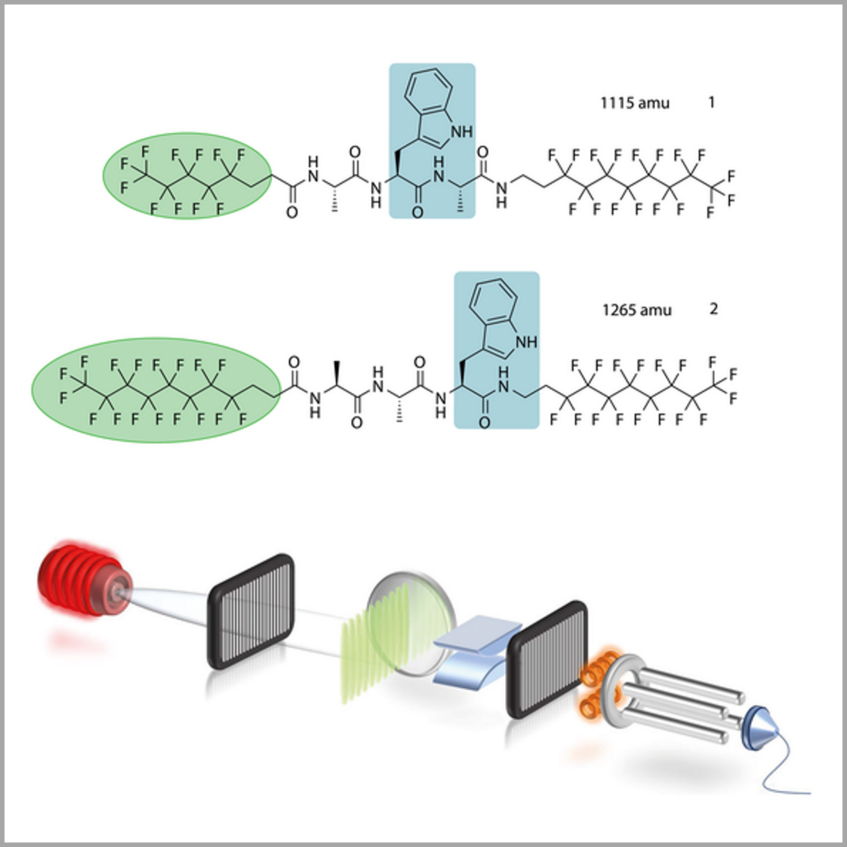Quantum interference of thermal tripeptides

Quantum interference of thermal tripeptides
Peptides are essential building blocks of biology but in spite of being ubiquitous they are also thermally labile. We know that we have to maintain the temperature of the human body below 42°C in order to avoid thermal damage to our peptides and proteins.
Effusive sources of single amino acids are therefore already a challenge. And while the evaporation of dipeptides is already hard we are not aware of any experiment that had succeeded in preparing an intact thermal molecular beam of tripeptides, i.e. three amino acids connected by peptide bonds.
Jonas Schätti, Valentin Köhler and Marcel Mayor at the University of Basel succeeded in augmenting the complexity of the peptide by decorating them with perfluoroalkyl side chains. And while the mass of the compound was thus substantially increased, the intermolecular bonds were weakened. We could successfully form neutral molecular beams of these functional tripeptides that were sufficiently intense to be detected by electron impact quadrupole mass spectrometry, 3 m further down the vacuum line.
Adding 2 nanomechanical and an optical diffraction grating in between the source and the detector, the peptides were exposed to a LUMI matter-wave interferometer and showed indeed interference fringes. This is an interesting demonstration of the limits of thermal beam physics in application to biomolecules. More complex particles are currently being launched in fs-laser desorption and electrospray sources.
- Jonas Schätti, Valentin Köhler, Marcel Mayor, Yaakov Y. Fein, Philipp Geyer, Lukas Mairhofer, Stefan Gerlich, and Markus Arndt,
Matter-wave interference and deflection of tripeptides decorated with fluorinated alkyl chains
J. Mass Spectrometry 55 , e4514 (2020).
